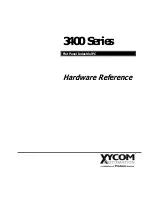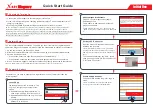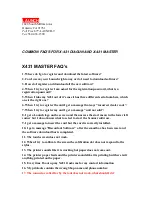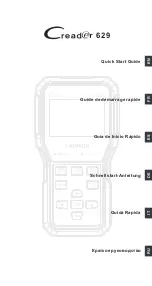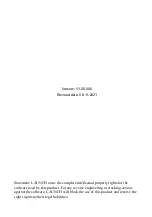
Operation Manual / TPL69-A10 / -A30 ... TPL77-A10 / -A30
5 Maintenance / 5.4 Cleaning turbine blades and nozzle ring in opera-
tion
© Copyright 2018 . All rights reserved.
HZTL2481_EN
Revision C
May 2018
5.4 Cleaning turbine blades and nozzle ring in
operation
The combustion of heavy fuel oil in diesel engines contaminates the tur-
bine blades and nozzle rings of turbochargers. The deposits on the tur-
bine components originate from the following combustion products:
¡
Soot
¡
Molten ash
¡
Cinder
¡
Incompletely burned fuel
¡
Sodium vanadyl vanadate
It is advisable to use fuels with a low ash, sulphur, sodium and vanadium
content. The fuel must also be correctly stored, prepared and handled.
We recommend using fuels with a vanadium-to-sodium mass ratio of
less than 3:1 so that the melting temperature of the sodium vanadyl
vanadate is as high as possible.
The amount of contamination increases over time, which is why regular
and correctly performed cleaning is important in order to remove the de-
posits that have formed.
Contaminated turbine components can cause a slight increase in char-
ging pressure because of narrowing of the turbine cross-section. The
contamination causes a drop in turbine efficiency, and the engine tem-
peratures downstream of the cylinder can increase. The engine perform-
ance must therefore be reduced if necessary.
The contamination of the turbine also causes rotor unbalance. Extremely
heavy contamination can lead to non-permissibly high unbalance of the
rotor.
Operating experience has shown that, in spite of regular cleaning during
operation, it is essential to carry out the overhauls during which the tur-
bine and the nozzle ring are cleaned mechanically. However, if cleaning is
carried out properly and the cleaning system is properly dimensioned,
the intervals between overhauls can be increased.
Wet cleaning interval
The interval between periodic cleaning is very dependent on the operat-
ing conditions. As a rule, cleaning should be carried out every 50 to 200
operating hours.
Cleaning method
When cleaning the turbine components during operation, use wet clean-
ing. This cleaning method has been tested and approved by ABB Turbo
Systems.
Prerequisites for wet cleaning are that the engine builder approves the
process and his instructions are followed.
Principle of wet cleaning
Wet cleaning makes use of various effects. Depending on the composi-
tion of the contamination, the individual effects with their different
levels of intensity have a varying influence on the cleaning result:
Page
56
/
136


































